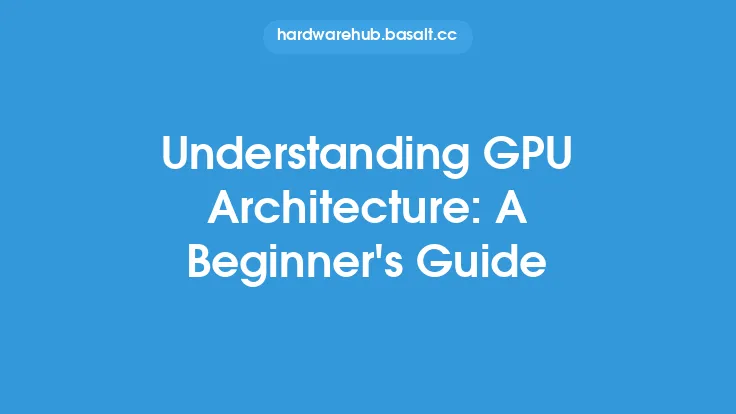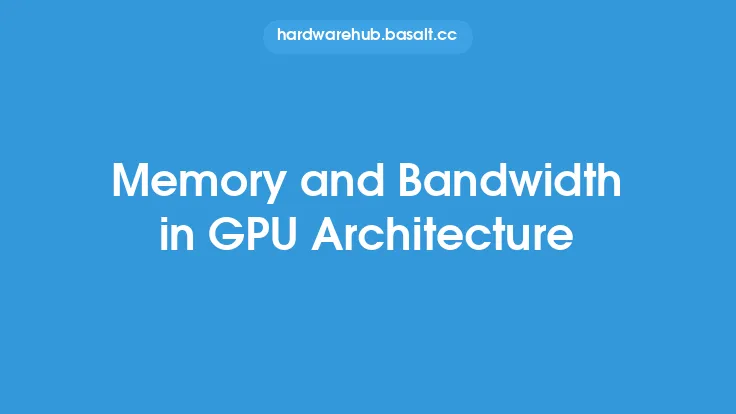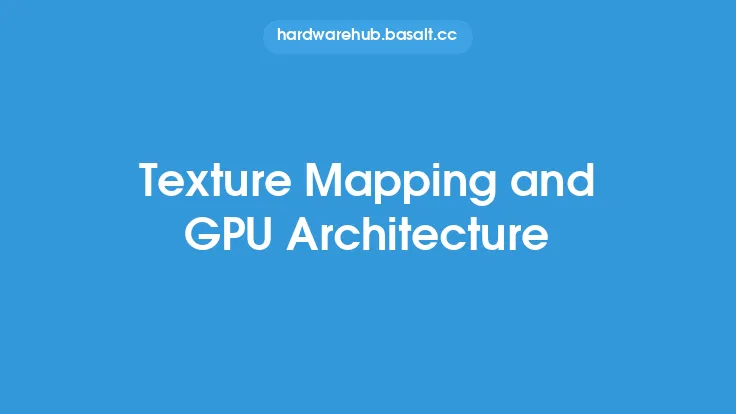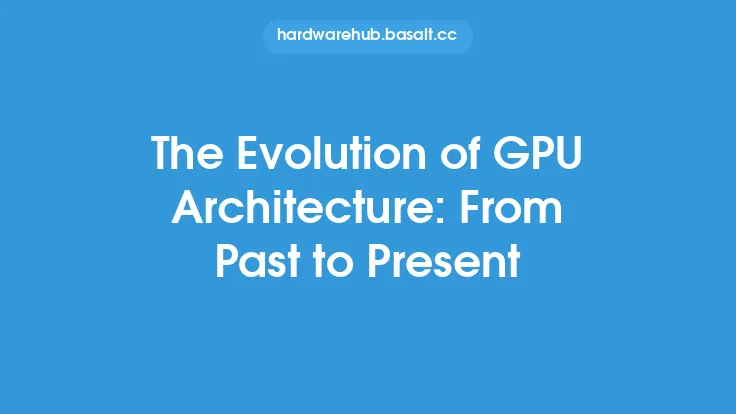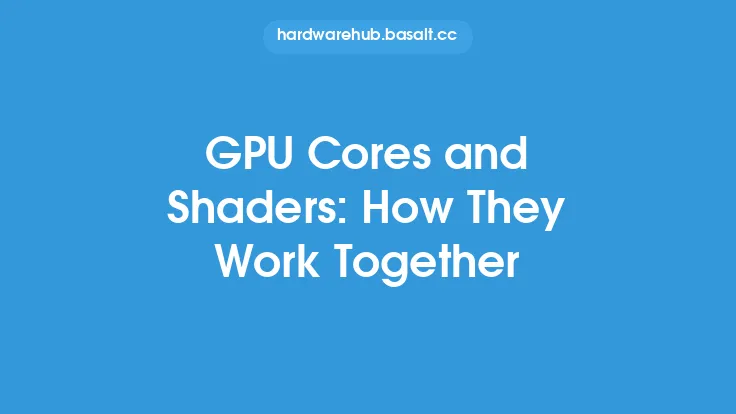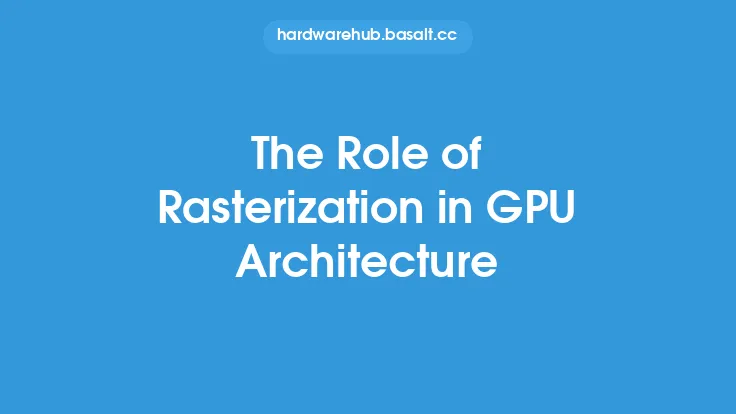The architecture of modern Graphics Processing Units (GPUs) is designed to handle massive parallel processing, making them incredibly efficient for tasks that require simultaneous execution of multiple threads or processes. This is in stark contrast to Central Processing Units (CPUs), which are optimized for serial processing and are better suited for tasks that require high clock speeds and low latency. The key to understanding GPU architecture lies in its ability to process large amounts of data in parallel, making it an essential component in applications such as graphics rendering, scientific simulations, and machine learning.
Introduction to Parallel Processing
Parallel processing is a technique where multiple processing units work together to perform a task, dividing the workload into smaller, independent chunks that can be executed simultaneously. This approach can significantly improve the performance and efficiency of certain tasks, especially those that involve large amounts of data or complex computations. In the context of GPU architecture, parallel processing is achieved through the use of multiple processing cores, each capable of executing a large number of threads concurrently. This allows GPUs to handle tasks such as matrix multiplication, convolution, and other linear algebra operations with ease, making them a crucial component in many modern computing applications.
GPU Architecture Overview
A typical GPU consists of several key components, including the graphics processing clusters, memory hierarchy, and command processing. The graphics processing clusters are the heart of the GPU, comprising multiple processing cores, each with its own set of execution units, registers, and cache memory. These clusters are responsible for executing the majority of the GPU's workload, including graphics rendering, compute tasks, and other parallel workloads. The memory hierarchy, on the other hand, is responsible for storing and retrieving data, and consists of multiple levels of cache memory, as well as the main graphics memory. The command processing unit is responsible for managing the flow of data and instructions between the various components of the GPU, ensuring that the processing clusters are always fully utilized.
Processing Cores and Execution Units
The processing cores are the fundamental building blocks of the GPU's parallel processing architecture. Each core is capable of executing a large number of threads concurrently, using a technique called Simultaneous Multithreading (SMT). This allows the GPU to handle a massive number of threads, each with its own program counter, registers, and execution state. The execution units, on the other hand, are responsible for performing the actual computations, and can include components such as integer and floating-point arithmetic logic units (ALUs), load/store units, and special function units (SFUs). The execution units are typically pipelined, allowing them to process multiple instructions simultaneously and improving overall throughput.
Memory Hierarchy and Bandwidth
The memory hierarchy is a critical component of the GPU's architecture, as it provides the necessary storage and retrieval of data for the processing cores. The memory hierarchy typically consists of multiple levels of cache memory, including the L1, L2, and L3 caches, as well as the main graphics memory. The cache memory is used to store frequently accessed data, reducing the latency and increasing the bandwidth of memory accesses. The main graphics memory, on the other hand, provides a large storage capacity for textures, vertices, and other graphics data. The memory bandwidth is a critical factor in determining the overall performance of the GPU, as it directly affects the amount of data that can be transferred between the processing cores and the memory hierarchy.
Parallel Processing Models
There are several parallel processing models used in GPU architecture, each with its own strengths and weaknesses. The most common models include the data-parallel model, the task-parallel model, and the pipeline-parallel model. The data-parallel model is used for tasks such as matrix multiplication and convolution, where the same operation is applied to multiple data elements simultaneously. The task-parallel model, on the other hand, is used for tasks such as graphics rendering, where multiple tasks are executed concurrently, each with its own set of dependencies and synchronization requirements. The pipeline-parallel model is used for tasks such as video encoding and decoding, where a stream of data is processed in a pipelined fashion, with each stage of the pipeline executing a different task.
Synchronization and Communication
Synchronization and communication are critical components of parallel processing, as they allow the processing cores to coordinate their actions and exchange data. In GPU architecture, synchronization is typically achieved through the use of barriers, which allow threads to wait for each other to reach a certain point in their execution. Communication, on the other hand, is typically achieved through the use of shared memory, which allows threads to exchange data directly. The GPU also provides a number of other synchronization and communication primitives, including atomic operations, reduction operations, and message-passing interfaces.
Conclusion
In conclusion, the architecture of modern GPUs is designed to handle massive parallel processing, making them incredibly efficient for tasks that require simultaneous execution of multiple threads or processes. The key to understanding GPU architecture lies in its ability to process large amounts of data in parallel, using a combination of multiple processing cores, a memory hierarchy, and command processing. The parallel processing models used in GPU architecture, including the data-parallel, task-parallel, and pipeline-parallel models, allow for a wide range of tasks to be executed efficiently, from graphics rendering and scientific simulations to machine learning and data analytics. As the demand for parallel processing continues to grow, the importance of GPU architecture will only continue to increase, driving innovation and advancement in the field of computer science.
